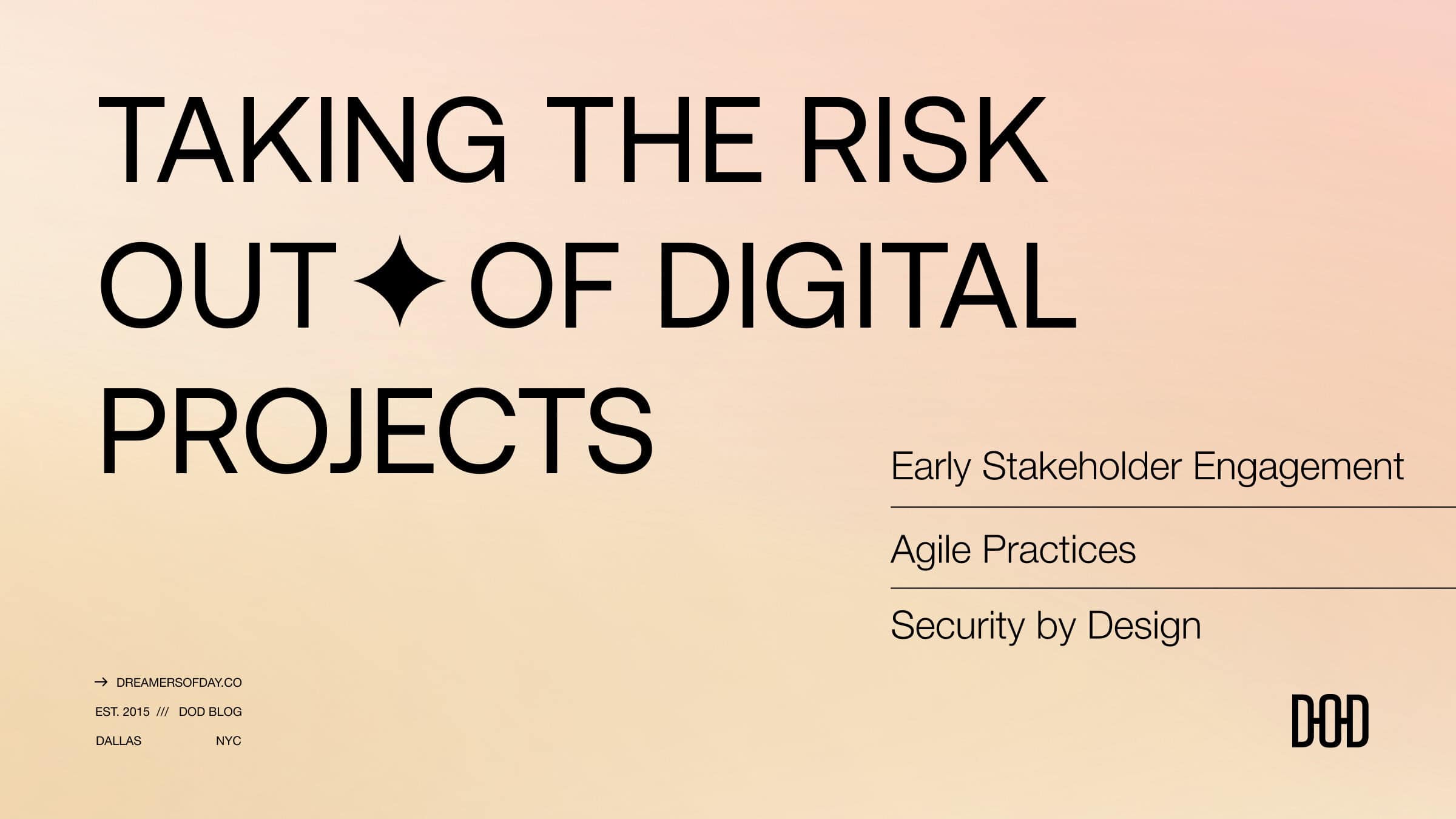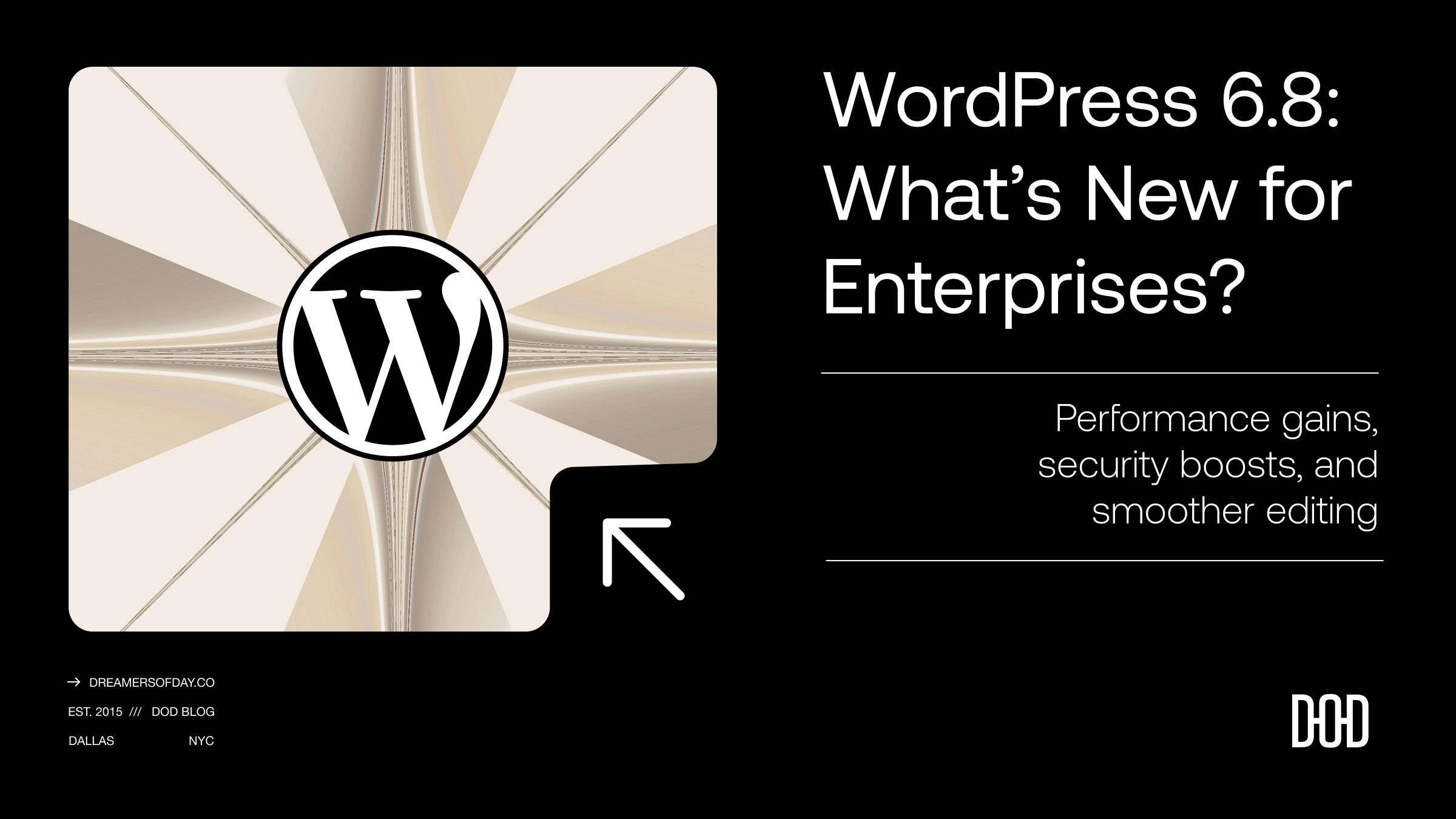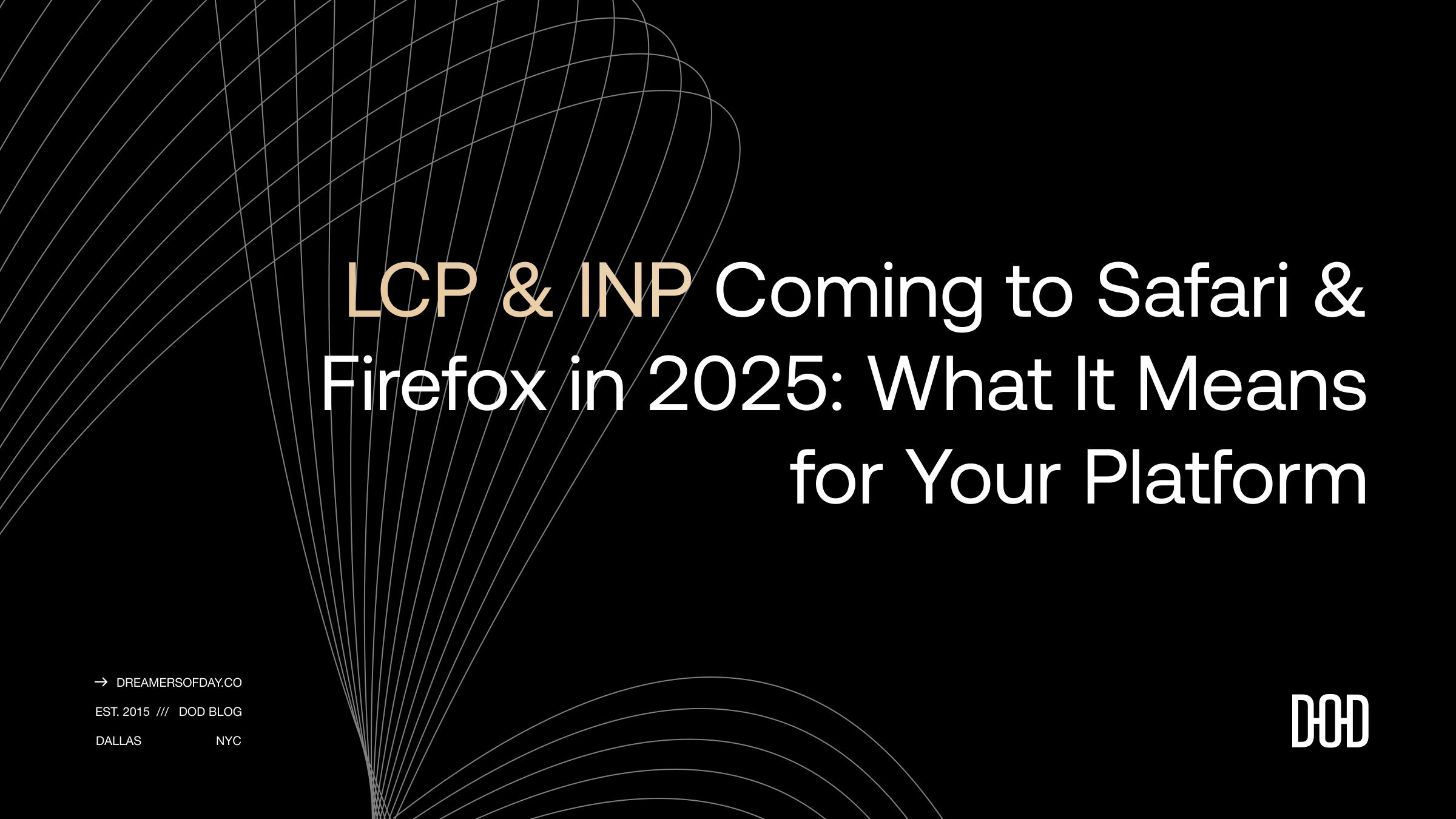Taking the Risk Out of Digital Projects

The journey from concept to launch is fraught with challenges. Successfully bringing a product to market requires more than just technical expertise; it demands a strategic approach to managing risks and overcoming potential obstacles. Here are key insights and strategies to help you navigate this complex process and ensure your digital product not only meets but exceeds expectations.
Identifying Risk
The first step in reducing risk is recognizing where it exists. These common pitfalls in digital product development can easily derail a project if not addressed proactively:
Unclear Objectives: Projects can lose focus without well-defined goals, leading to scope creep and misaligned outcomes. This often results in a product that fails to meet user needs or business objectives.
Poor User Experience: A product that doesn’t resonate with its users will likely see low adoption rates, negative feedback, and poor return on investment (ROI). Prioritizing UX from the outset is essential.
Scalability and Performance: Products not designed with scalability and performance in mind can struggle to meet user demands as they grow, leading to slow load times and poor future-proofing.
Security Vulnerabilities: As cyber threats evolve, ensuring products are secure from the start is crucial. Neglecting security can lead to data breaches and reputational damage.
Breaking Down Potential Risk Areas
To effectively manage risks, it’s helpful to evaluate and break down potential risk areas within a project. This approach identifies specific risks tied to different phases of the development process and addresses them proactively. By categorizing risks—such as technical, user experience, security, and compliance risks—targeted strategies can be created to mitigate them.
This segmentation ensures that no critical area is overlooked, ultimately reducing the likelihood of unforeseen challenges.
Engaging Stakeholders Early
One of the key factors in the success of digital projects is involving the right stakeholders from the very beginning. This includes business leaders, developers, designers, and end-users. Bringing everyone to the table early ensures that the project’s objectives are clear, and all parties are aligned on expectations and goals.
Potential Risk: Failing to engage stakeholders early can lead to misalignment and conflicting priorities later in the project, increasing the likelihood of scope changes, delays, or even project failure.
Mitigation Tips:
- Continuous Communication: Maintain open lines of communication with stakeholders through regular updates, meetings, and collaborative tools. This ongoing dialogue keeps everyone informed and aligned, reducing the risk of misunderstandings or shifting priorities.
- Stakeholder Buy-In: Early involvement helps secure stakeholder buy-in, making it easier to overcome potential roadblocks and ensuring the project has the support it needs to succeed.
The Critical Role of Discovery
Skipping or rushing through the discovery phase is a common mistake that can lead to significant risks down the line. The discovery phase is an opportunity to fully understand the problem that needs to be solved, the needs and wants of the users, and the technical requirements of the project.
Potential Risk: Inadequate discovery can result in an incomplete understanding of the project’s requirements, leading to costly changes or redesigns later in the process.
Mitigation Tips:
- In-Depth Research: Conduct thorough research to understand the target audience, market conditions, and potential challenges. This foundation is crucial for developing a product that meets user needs and performs well in the market.
- Defining Requirements: The discovery phase allows for the definition of clear requirements and success metrics, reducing the risk of scope creep and keeping the project focused on delivering value.
Validating Ideas with a Proof of Concept
Before committing significant resources to full-scale development, it’s important to create a Proof of Concept (POC). A POC allows time to validate ideas, test assumptions, and gather feedback with minimal investment.
Potential Risk: Skipping the POC stage can lead to investing heavily in a product concept that may not be technically feasible or well-received by users.
Mitigation Tips:
- Early Validation: A POC helps confirm that core concepts and features work as intended and resonate with users before we invest heavily in development.
- Identifying Issues Early: By testing a scaled-down version of the product, potential technical challenges, user experience issues, or market misalignment can be uncovered and adjusted with low stakes.
- Cost-Effective Iteration: Investing in a POC reduces the risk of wasting resources on a product that doesn’t meet user needs or business goals. It’s a smart way to ensure the core product is on the right track.
Implementing Agile Practices
Flexibility is key in digital product development. Leverage Agile methodologies to adapt to changing requirements and new information as the project progresses.
Potential Risk: Rigid development processes that don’t allow for iterative feedback can result in a final product that fails to meet user needs or market demands.
Mitigation Tips:
- Iterative Development: Break the project into manageable sprints, allowing for continuous testing and refinement. This iterative approach helps to identify and address issues early, minimizing the risk of major setbacks.
- Regular Feedback Loops: Incorporate regular feedback loops with stakeholders and end-users to ensure that the product evolves in line with user needs and stakeholder expectations.
- Adaptability: Agile practices give the ability to pivot when necessary, responding to new challenges or opportunities as they arise. This adaptability is crucial for managing risks in a dynamic development environment such as digital product development.
Security and Compliance
When developing a digital product, security and compliance are paramount at every stage. From the initial design phase to final deployment, it’s essential to integrate robust security measures.
Potential Risk: Failing to prioritize security and compliance can result in legal penalties, data breaches, and loss of customer trust, all of which can have severe consequences for the product and the organization.
Mitigation Tips:
- Security by Design: Consider security from the outset by conducting thorough security assessments and implementing best practices to protect against vulnerabilities.
- Compliance Standards: Ensure that all products meet relevant compliance standards, such as GDPR or WCAG, reducing the risk of legal issues and enhancing user trust.
- Ongoing Monitoring: Post-launch, continue to monitor the product for any emerging security threats, ensuring that it remains secure as the digital environment evolves.
Post-Launch Maintenance and Support
Risk management doesn’t end with the launch. Ongoing maintenance and support are critical to ensuring the product’s long-term success.
Potential Risk: Without proper post-launch support, products can quickly become outdated or suffer from unresolved issues, leading to user dissatisfaction and increased operational costs.
Mitigation Tips:
- Regular Updates: Provide regular updates to keep the product secure, functional, and aligned with evolving user needs and technological advancements.
- Performance Monitoring: Continuous monitoring helps to quickly identify and address any performance issues, ensuring that the product continues to deliver a high-quality user experience.
- Responsive Support: Invest in a support team that’s always available to address any issues that arise, ensuring that problems are resolved quickly and efficiently.
Tools for Risk Identification and Mitigation
Managing risks effectively requires the use of specialized tools and methodologies to identify, track, and mitigate potential issues. Here are some of the tools we use to ensure thorough risk management throughout the project lifecycle:
- RACI Chart: A RACI chart (Responsible, Accountable, Consulted, Informed) helps clarify roles and responsibilities within the project. By defining who is responsible for what, we can reduce confusion and ensure that risks are managed efficiently and effectively. Learn more about RACI charts.
- Risk Assessment Matrix: This matrix helps evaluate risks based on their likelihood and impact, allowing us to prioritize them effectively. It provides a visual representation of risks, making it easier to communicate the risk landscape to stakeholders and ensure that appropriate mitigation strategies are in place. Learn more about Risk Assessment Matrixes.
Conclusion
Developing a digital product is a complex process, but you don’t have to navigate it alone. Dreamers of Day specializes in managing risks and delivering products that meet both business objectives and user needs. With our comprehensive approach—spanning from discovery and stakeholder engagement to security, compliance, and post-launch support—we’re here to help you bring your vision to life with confidence and success. Contact us today.


